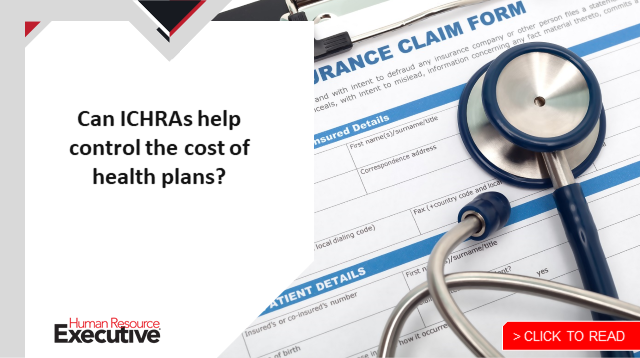Individual coverage health reimbursement arrangements are still a relatively new model of care—they were established through a rule issued by the Trump administration in 2019 and went into effect in 2020—but already, they’re taking off.
New research detailing the coverage option finds that ICHRAs have seen 350% growth since 2020, according to an inaugural HRA Report from the HRA Council, a nonprofit, nonpartisan advocacy organization comprised of HRA administrators, carriers, enrollment firms and practitioners. The report, and analysis of the trend of ICHRAs, will be the topic of a session at HRE’s 2023 Health & Benefits Leadership Conference, taking place in Las Vegas from May 3-5. Learn more and register here.
ICHRAs, a defined contribution approach to health benefits, are “causing a seismic shift in the employer-sponsored group market—addressing employers’ needs to significantly control costs and opening the doors for employees to be more informed healthcare consumers,” says John Kelly, CEO and founder of Nexben, a benefits tech firm. “ICHRAs are the 401(k) of health benefits.”
With an ICHRA, business owners determine a set budget to reimburse their employees for health insurance and workers choose the plan that works best for them. Some employers also reimburse for medical expenses. Employers then “design” their HRA. They can choose to divide by class or can scale rates by family size and age—which is the most common, according to Jack Hooper, chairman of the board for the HRA Council and CEO and founder of Take Command, an ICHRA administrator based in Dallas, who spoke with HRE earlier this year. Employees then buy their own individual health insurance plans and are reimbursed through their paychecks.
 Hooper says while the number of large employers switching to ICHRAs has grown “exponentially,” small and midsized employers are leading the charge “to deliver much-needed innovation in the benefits space, consumer empowerment and choice for employees, and cost control and flexibility for employers.”
Hooper says while the number of large employers switching to ICHRAs has grown “exponentially,” small and midsized employers are leading the charge “to deliver much-needed innovation in the benefits space, consumer empowerment and choice for employees, and cost control and flexibility for employers.”
ICHRAs, in particular, are extending benefits to traditionally difficult-to-insure groups, like part-time and seasonal workers—all of which have seen big climbs in the wake of the pandemic, the report finds.
Update: ICHRA popularity ‘skyrocketing’ as benefits costs rise
In general, HRAs are doubling on average among all states, with significant growth across all industries, types of employers and employee groups. Virtually all adoption (92%) is happening among companies with 20 or fewer employees. Along with ICHRAs, qualified small employer health reimbursement arrangement (QSEHRA) adoption nearly doubled during the same period, since 2020, “representing strong and steady growth for the popular solution for firms with fewer than 50 employees,” the analysis finds.
Average participation rates for employees offered an ICHRA or QSEHRA is 60%, comparable to industry standards for employer-sponsored group plans, the report finds.
“Traditionally, employers have only offered one group plan that may not have worked well for employees in different geographic locations, demographics or family statuses,” says Victoria Glickman Hodgkins, CEO of PeopleKeep, a benefits administration software firm. “HRAs allow employers to offer a more personalized approach to health benefits.”

